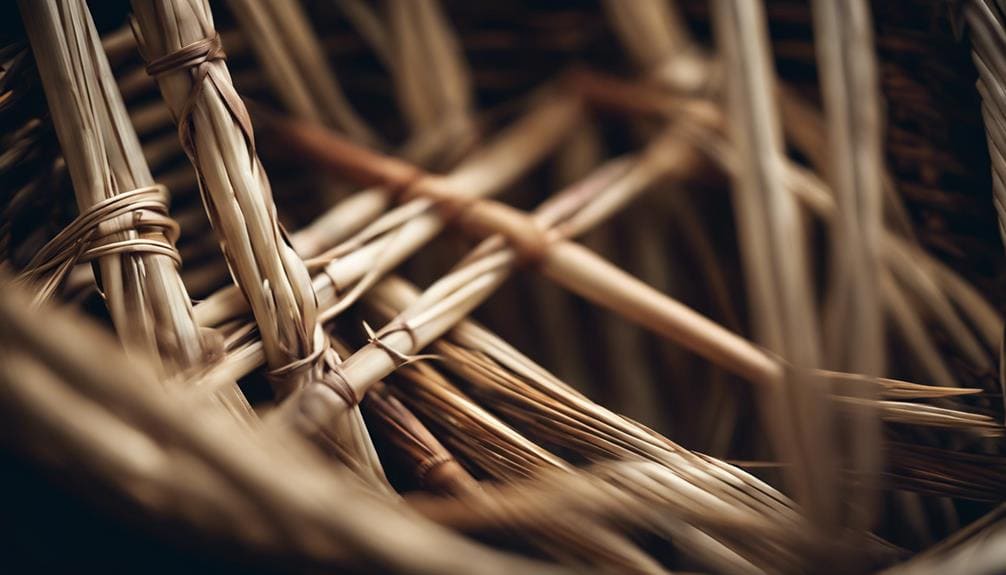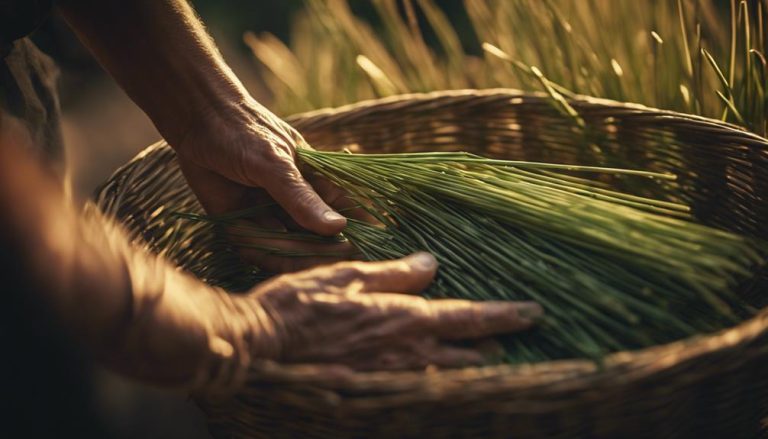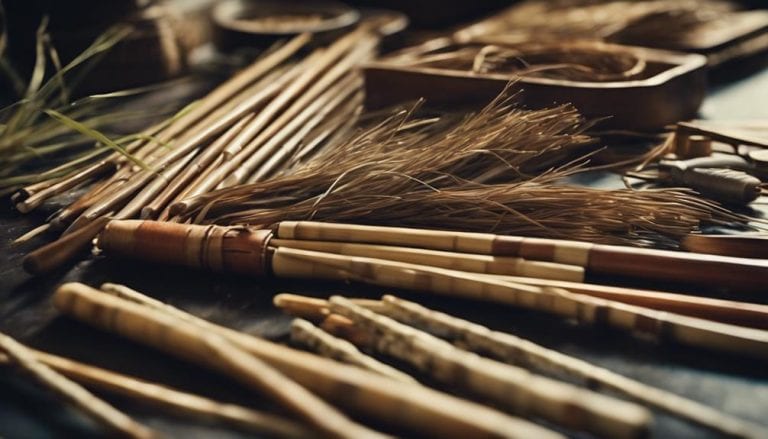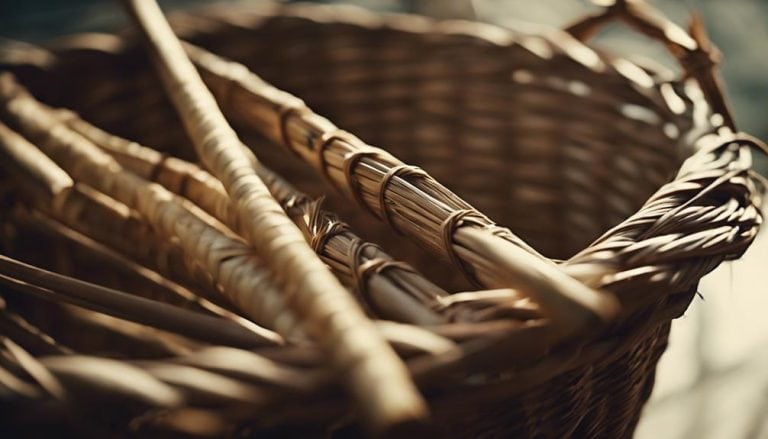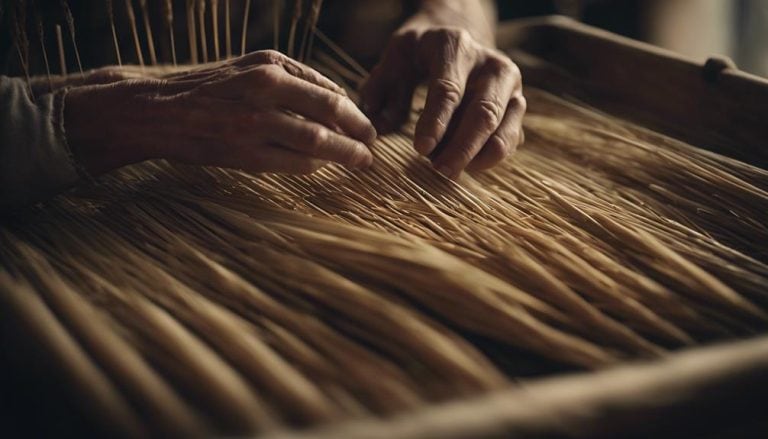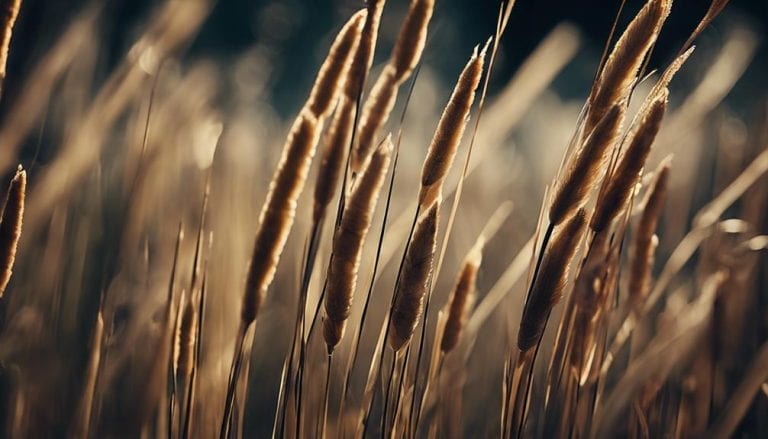In-depth Understanding of Rush Reeds in Basketry
Have you ever wondered about the intricate world of rush reeds in basketry? Rush reeds’ subtle beauty and versatility go beyond mere craftsmanship; they hold stories of tradition and symbolism woven through generations. Exploring the depths of rush reeds in basketry unveils practical techniques and reveals a rich tapestry of cultural significance waiting to be unraveled.
Understanding rush reeds in basketry involves learning their properties and how they are used in weaving, which is essential for creating sturdy and beautiful baskets. Exploring rush reeds’ flexibility and durability enhances basket makers’ ability to craft intricate designs with natural materials.
Key Takeaways
- Rush reeds offer durability and flexibility for intricate basket weaving.
- Proper harvesting and processing techniques ensure quality rush reeds.
- Understanding rush reed types aids in selecting the right material for projects.
- Advanced weaving techniques with rush reeds enhance basket aesthetics and longevity.
Properties of Rush Reeds
Soft rush reeds, a species of the Juncus genus, exhibit distinctive properties that make them highly sought-after materials for traditional basket weaving and crafting. Their remarkable flexibility allows artisans to manipulate the reeds into intricate patterns, creating sturdy yet pliable structures. When woven together, these reeds form a strong foundation, ensuring the longevity and durability of the final piece.
Rush reeds’ ability to bend without breaking is a testament to their strength, making them ideal for functional pieces that withstand daily use. Their durability ensures that baskets, mats, and other items crafted from them can withstand the test of time, passing down through generations as cherished heirlooms.
Incorporating rush reeds into traditional crafts showcases their physical properties and honors the cultural significance of working with natural materials. The synergy between the flexibility and durability of rush reeds highlights the deep connection between nature and human creativity, offering a liberating experience for both the artisan and the observer.
Harvesting and Processing Techniques
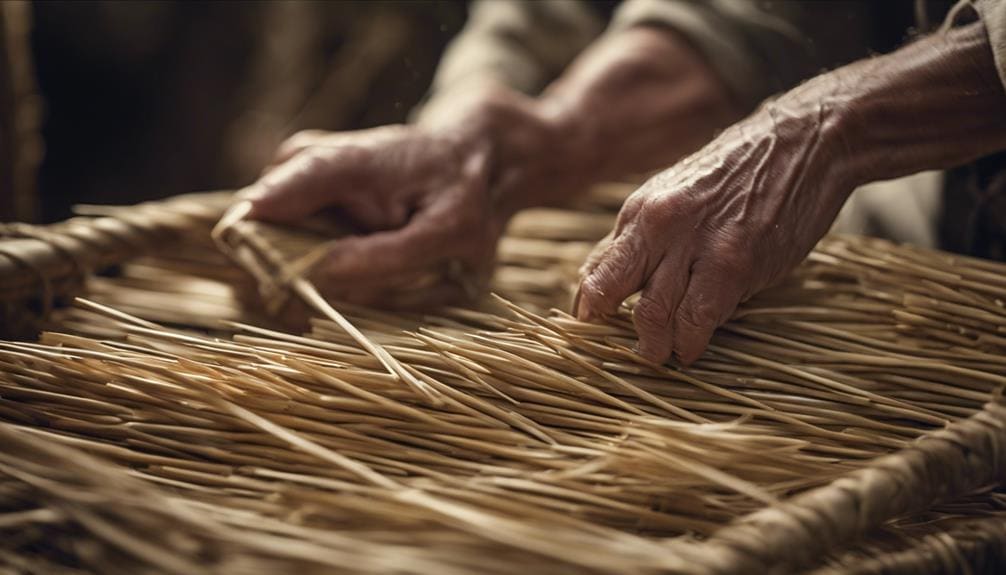
Harvesting and processing rushes for basketry involves carefully selecting and cutting the reeds at their base in wetland areas with a soft foam-like center, a technique commonly carried out using scissors.
Techniques for Harvesting and Processing Rushes:
- Sustainable Practices: I ensure that the rushes are harvested using eco-friendly methods, allowing the wetland areas to regenerate naturally and sustainably.
- Sorting Process: After harvesting, the rushes are sorted by length and thickness to guarantee uniformity, which is essential for crafting purposes and achieving a cohesive final product.
- Cultural Significance: Rushes hold symbolic meanings in various cultures, representing protection, good luck, and the arrival of spring. For instance, Saint Brigid’s crosses made from rushes are hung above doors for blessings.
- Historical Artistic Uses: Rushes have been historically used to create various items like small domestic objects, floor mats, costumes, dolls, and protective crosses, showcasing the cultural significance and versatility of this natural material.
Types of Rush Reeds for Basketry
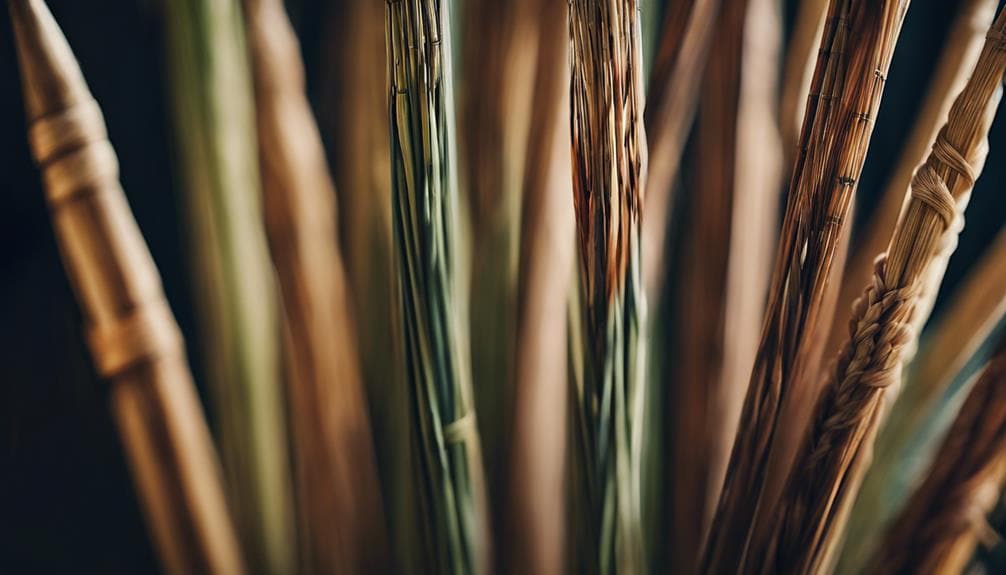
Cultural traditions surrounding rush reeds in basketry reveal the significance of different rush types, like soft rush and bullrush, in crafting practices and artistic expressions. Every kind of rush reed offers unique qualities influencing basketry aesthetics and environmental sustainability. With its slender, hollow stems, soft rush provides a smoother, more flexible material perfect for intricate weaves in finer baskets, mats, and chair seats.
On the other hand, bullrush, with its thicker, triangular stems, thrives in marshes and offers a sturdier option for coarser projects like coiled baskets, mats, and larger items. Understanding the characteristics and growth habits of these rush reeds is crucial for selecting the appropriate material based on the desired outcome of the weaving project.
| Soft Rush | Bullrush |
|---|---|
| Slender, hollow stems | Thicker, triangular stems |
| Suitable for fine weaving | Ideal for coarser projects |
| Used for finer baskets, mats, chair seats | Favored for coiled baskets, mats, larger items |
Preparing Rush Reeds for Weaving
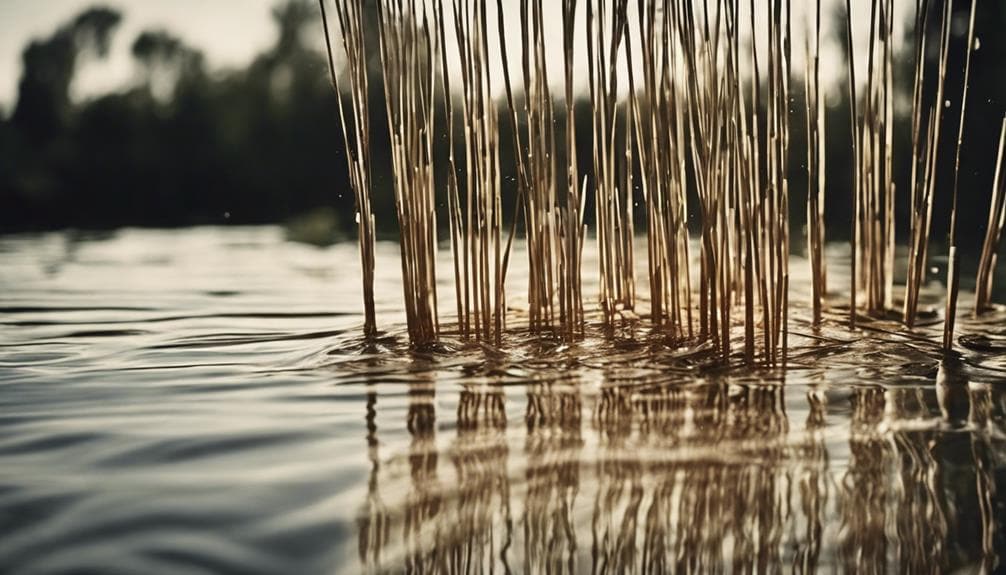
Gathering rushes from their natural habitats involves cutting them at the base to ensure uniformity and cleanliness for weaving. Once harvested, rushes require careful preparation before they can be woven into intricate designs. Here are some crucial steps to prepare rush reeds for weaving:
- Sorting Rushes: Organize rushes based on length and thickness to streamline the weaving process effectively.
- Drying Methods: Allow rushes to dry naturally in a well-ventilated area to maintain their structural integrity for weaving.
- Dyeing Options: Explore various techniques to add vibrant colors to rushes to create visually appealing designs.
- Storage Tips and Moisture Control: Store rushes in a cool, dry place to prevent mold growth and maintain their quality for future weaving projects.
Advanced Weaving Techniques With Rush Reeds
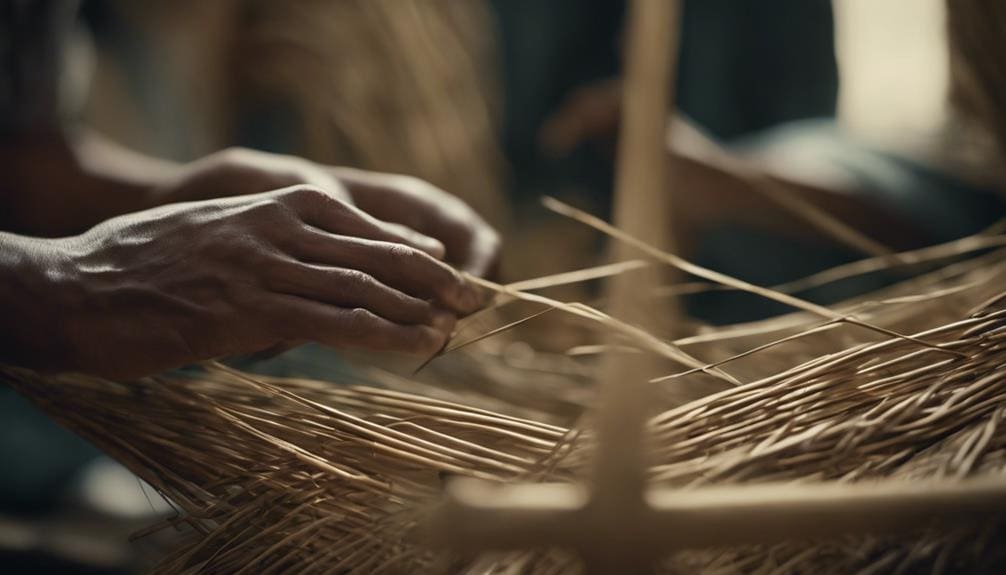
Exploring the intricate plaiting techniques with rush reeds reveals the artistry and durability inherent in advanced basket weaving methods. With their soft, foam-like center and exceptional flexibility, Rush reeds allow for the creation of stunning artistic designs and creative patterns in woven baskets. Harvesting rush reeds involves carefully cutting them at the base and sorting them by length and thickness to suit specific weaving techniques.
Whether dyed in vibrant hues or left natural for a more organic look, rush reeds add depth and contrast to the woven patterns. Advanced weaving techniques with rush reeds encompass a range of methods, such as intricate plaiting, coiling, and twining.
These techniques result in visually appealing baskets and ensure their durability. Weavers can craft unique pieces that showcase their skill and creativity by mastering these techniques. The interplay of colors, textures, and weaving styles in rush reed baskets exemplifies the beauty and complexity of this traditional craft.
Common Mistakes to Avoid
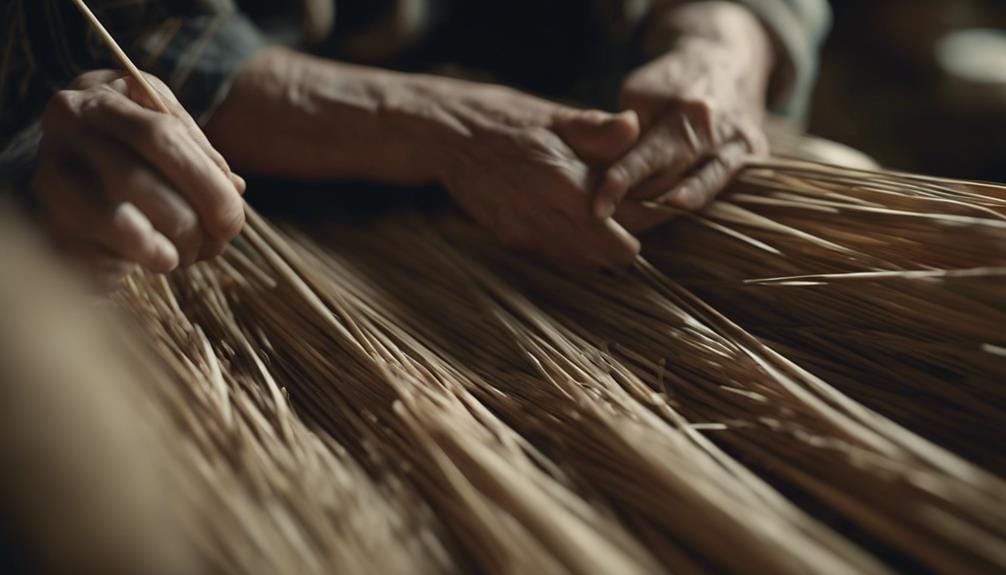
In the craft of basket weaving with rush reeds, it is crucial to be mindful of common mistakes that can compromise the quality and integrity of the final woven piece. To ensure a successful weaving process, here are some key points to consider:
- Proper Handling: Avoid mishandling rushes during the weaving process to prevent breakage and ensure the longevity of the final basket.
- Selection Tips: Choose rushes carefully, avoiding those with mold, rot, or insect damage, as these can weaken the basket’s structure.
- Harvesting Caution: Do not overharvest rushes from one area, as this could deplete local sources and impact the ecosystem.
- Drying and Storage: Properly dry and store rushes after harvesting to prevent mold and deterioration, preserving their quality for future use.
Finishing and Caring for Rush Reed Baskets
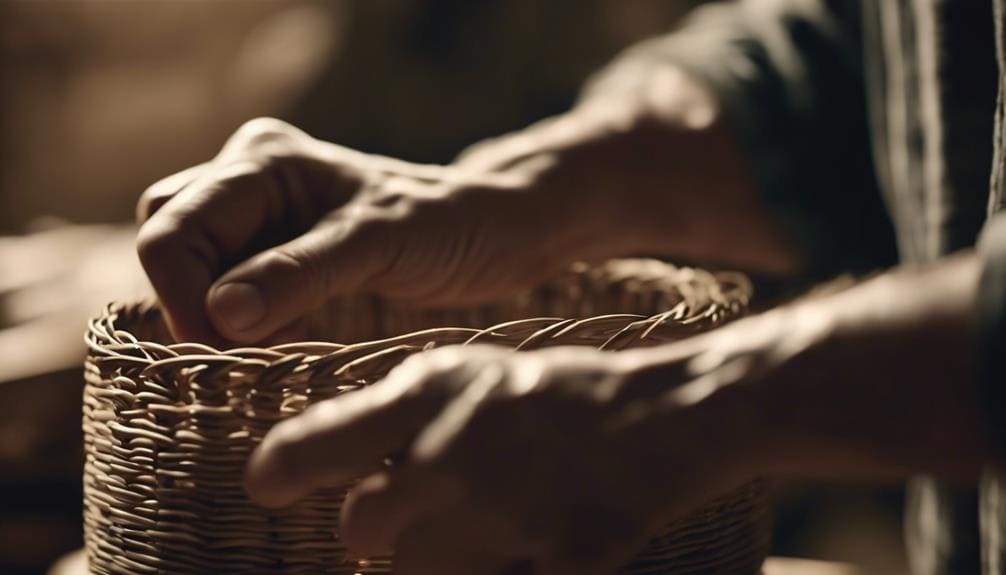
Proper finishing and care practices play a vital role in maintaining rush reed baskets’ longevity and beauty. Regarding cleaning techniques, gentle dusting with a soft brush or cloth occasionally is sufficient to keep the baskets looking their best. Storing rush reed baskets in a dry area, away from direct sunlight, is essential to avoid fading and potential damage.
Preservation methods involve safeguarding the baskets from extreme heat and moisture to maintain color and flexibility. Prompt repair is crucial to prevent further structural harm if any rush reeds become loose or broken. Applying a light coat of natural oils like linseed or tung oil can also help condition and shield the baskets over time. Following these simple yet effective care strategies ensures that your rush reed baskets remain functional and aesthetically pleasing for years.
Frequently Asked Questions
How Do You Prepare Rushes for Weaving?
To prepare rushes for weaving, I soak them to make them pliable. Trimming each rush to a uniform length is crucial. Then, I carefully select weaving patterns and finish with techniques that enhance the durability and beauty of the final product.
What Are Basket Reeds?
Basket reeds serve as nature’s threads, woven into intricate designs. Rush reeds, plucked from wetlands, offer a flexible core for crafting. Their history spans ages, showcasing durability and versatility in traditional artistry.
What Are the 5 Techniques of Basketry?
I explore basketry techniques such as twining patterns and coiling methods. Reed selection plays a crucial role in the weaving process. Learning these techniques connects me to cultural traditions and liberates me.
What Are the Three Techniques Used in Native American Basket Weaving?
I craft baskets with plaiting, coiling, and twining, traditional techniques of Native American basket weaving. These methods use natural materials like rush reeds to create intricate designs with deep cultural significance through their patterns and materials.
Conclusion
Reflecting on the intricate art of rush reed basketry, I am reminded that “practice makes perfect.” Each weave tells a story, and each stitch symbolizes tradition and craftsmanship. The soft fibers of the rush reeds hold a history of resilience and creativity passed down through generations. With patience and dedication, one can unravel the secrets of this ancient craft and create baskets that are not just functional but also imbued with cultural significance.

